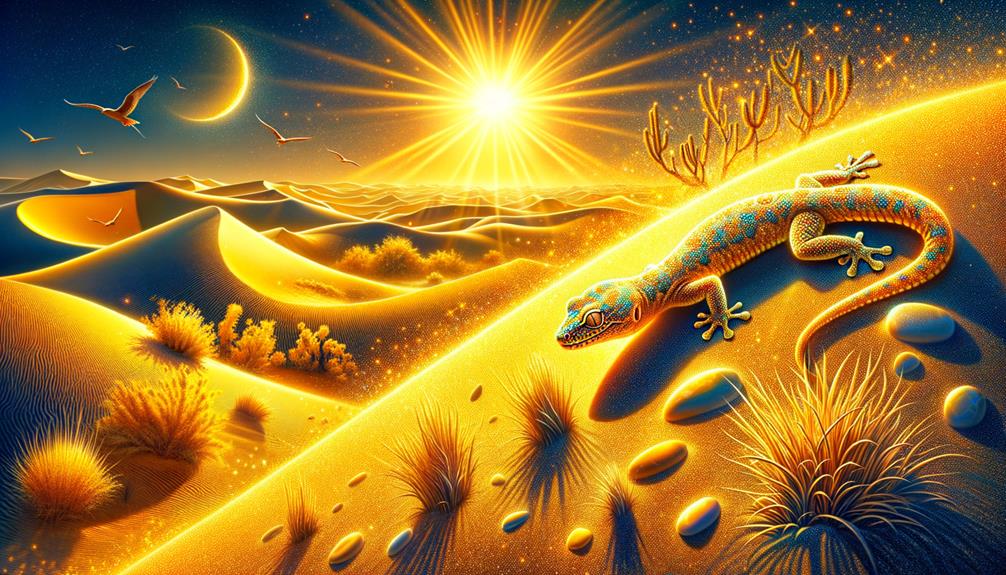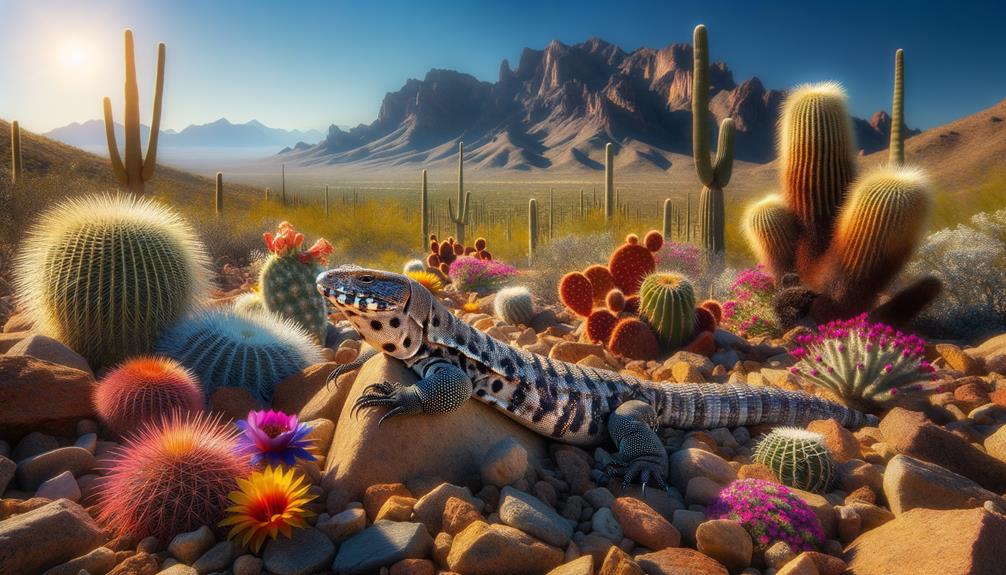Under the blistering Kalahari sun, I observe snakes navigating the scorching sands with calculated precision, each movement a testament to their survival instincts. Puff Adders blend seamlessly into their surroundings with their mottled skins, while Cape Cobras move stealthily, evading detection. The Horned Adder, with its sand-colored scales, lies in wait for the perfect ambush. These snakes have mastered the art of adaptation, conserving water and using venom to capture prey in this unforgiving desert environment. However, human encroachment and climate change pose a significant threat to their delicate ecosystem. To gain a deeper understanding of the intricate balance between life and death among these remarkable creatures, there’s still much to explore.
Key Takeaways
The Kalahari Desert is home to unique snake species that have adapted to its harsh, arid environment. Puff Adders and Horned Adders use camouflage to survive in the desert sands, blending in seamlessly with their surroundings. Cape Cobras, on the other hand, have a diverse diet that helps control prey populations. However, snakes in the Kalahari face significant threats from habitat disruption and climate change. To combat these issues, conservation efforts focus on public education, habitat protection laws, and collaboration with local communities.
Unique Snake Species
In the scorching heat of the Kalahari Desert, a variety of unique snake species have adapted to thrive in this harsh environment. The Puff Adder, for instance, has developed a remarkable camouflage with its mottled skin, blending seamlessly into the desert ecosystem. This ability to remain unseen is crucial for its survival, as it must evade predators and prey alike.
The Cape Cobra, a shy and elusive creature, plays a vital role in the desert ecosystem by controlling prey populations. However, it is not invincible and often falls prey to birds and honey badgers. Despite this, the Cape Cobra remains an integral part of the desert’s delicate balance.
The Horned Adder, with its skin that mirrors the desert sand, is a master of ambush. It lies in wait, striking with precision, and its success is a testament to the intricate balance of life in the Kalahari. Each snake, a marvel of adaptation, leaves its mark on the shifting sands.
Adaptations for Survival
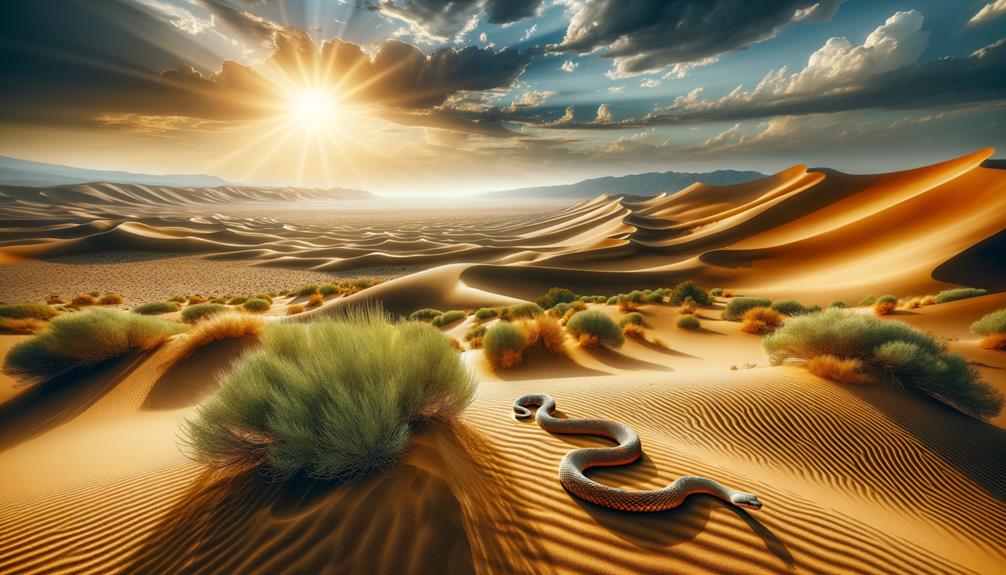
In the scorching heat of the Kalahari Desert, snakes have evolved remarkable adaptations to survive in this harsh environment. These desert dwellers thrive in a delicate ecosystem, showcasing nature’s incredible resilience.
The puff adder’s mottled skin allows it to blend seamlessly into the arid landscape, making it an expert ambush predator. Its potent venom ensures swift immobilization of prey, conserving energy and precious water. The cape cobra’s diverse diet helps it sustain itself, while also maintaining the balance of prey populations in the ecosystem.
The horned adder is a master of disguise, its sand-colored skin allowing it to merge with the desert floor. This camouflage not only aids in ambushing prey but also shields it from predators like birds of prey and honey badgers. Survival in such an unforgiving environment demands extraordinary adaptations.
| Snake Species | Primary Adaptation | Survival Benefit |
|---|---|---|
| Puff Adder | Mottled Skin | Camouflage |
| Cape Cobra | Diverse Diet | Prey Control |
| Horned Adder | Sand-Colored Skin | Ambush/Defense |
| All Species | Venom | Prey Immobilization |
| All Species | Water Conservation | Long Survival |
In this delicate ecosystem, each adaptation is a testament to the resilience and ingenuity of these desert dwellers, each one crucial to their continued existence amidst the scorching sands.
Ecological Roles
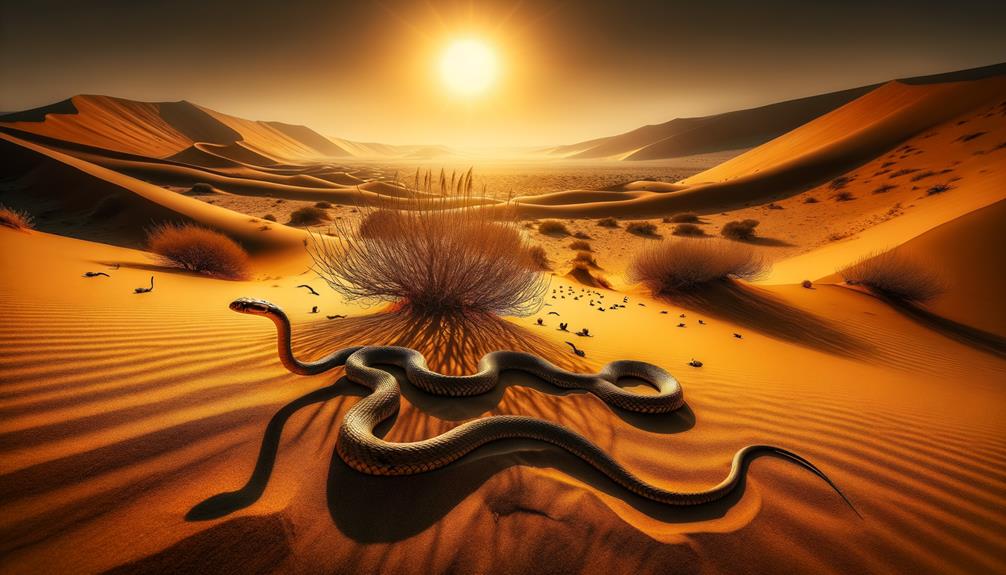
In the Kalahari Desert, snakes play a vital role in maintaining the delicate balance of the ecosystem. These serpents, with their stealthy movements, regulate the populations of rodents, birds, and other prey. The Cape Cobra, a shy and elusive creature, blends seamlessly into its surroundings, controlling prey numbers without drawing attention to itself.
The Horned Adder, a master of disguise, lies in wait, its sandy hues allowing it to merge with the desert floor. This camouflage not only helps it ambush unsuspecting prey but also protects it from larger predators, adding resilience to the desert’s ecological balance. The Puff Adder, with its potent venom and remarkable ability to survive without water, has adapted remarkably well to the harsh, food-scarce environment.
However, snakes are not just predators; they’re also prey. Birds of prey and honey badgers feed on them, perpetuating the cycle of life. In this arid landscape, snakes are essential threads in the desert’s delicate balance, playing a crucial role in its thriving ecosystem.
Threats to Habitat
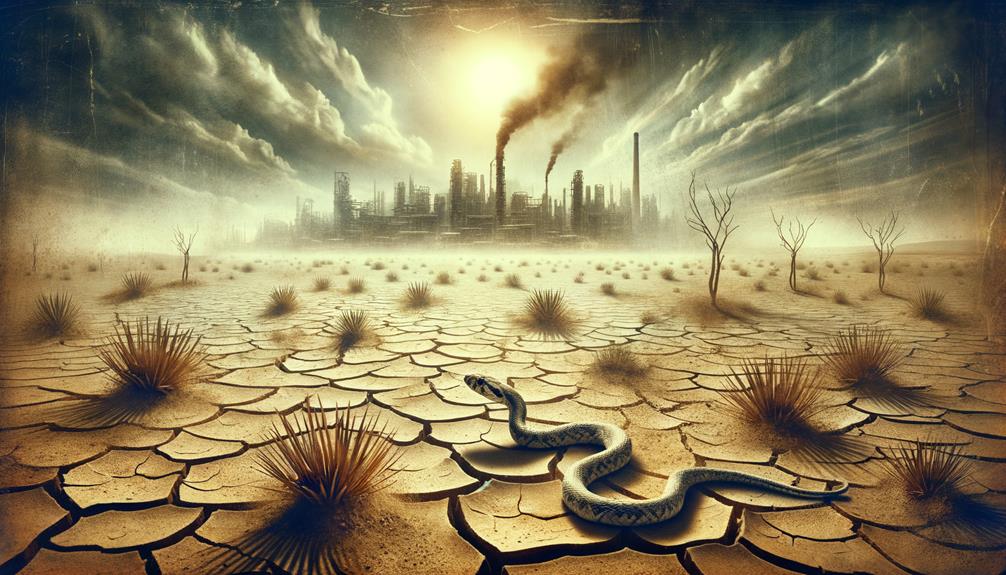
The existence of the serpentine guardians of the Kalahari is under threat due to human encroachment and climate change, which are eroding their sanctuary. As human settlements expand, they carve out swaths of the desert, disrupting sacred hunting grounds and hidden breeding sites. This disrupts the delicate balance between predator and prey, replacing the serpents’ trails with dusty roads and concrete.
Climate change is further exacerbating this plight, bringing unpredictable weather patterns and severe droughts that push the ecological balance to the brink. The serpents, attuned to the rhythms of this ancient land, are struggling to survive as their homes and livelihoods shrink.
The threats facing these snakes are multifaceted:
| Threat | Impact |
|---|---|
| Expanding human settlements | Loss of habitat and ecosystem disruption |
| Climate change | Unpredictable conditions, habitat degradation |
| Indiscriminate hunting | Population decline, fear-driven killings |
| Ecological imbalance | Disrupted food chains, ecosystem health risks |
The serpents of the Kalahari, symbols of freedom and resilience, are fighting for survival as their sanctuary is transformed by the relentless march of modernity and nature’s unpredictability.
Conservation Efforts
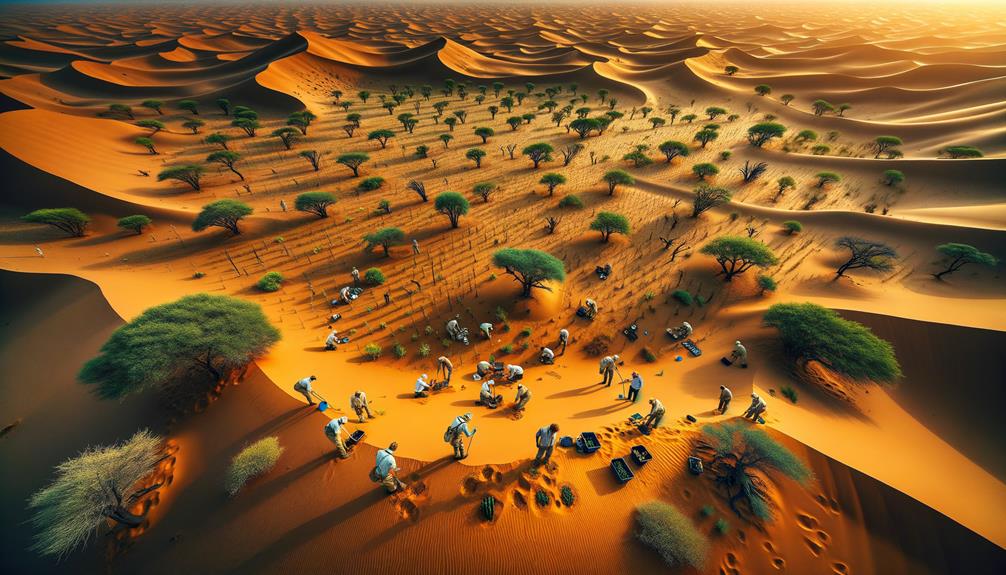
Protecting the serpentine guardians of the Kalahari requires a multifaceted approach that combines education, legislation, and community collaboration to secure their survival against the threats of modernization and climate change. Our conservation efforts involve a range of initiatives, each playing a vital role in ensuring the future of these enigmatic creatures.
Through public education initiatives, we aim to dispel fear-based misconceptions about Kalahari snakes and promote a sense of shared responsibility and respect for these serpentine beings. By educating people about the integral role snakes play in the ecosystem, we can foster a sense of reverence for these animals.
Conservation laws provide a vital shield against the destruction of snake habitats and indiscriminate hunting. While these legal protections are crucial, they must be backed by a community’s commitment to enforcement.
Ongoing monitoring and research programs are essential in informing our conservation strategies. By collecting and analyzing data, we can refine our approaches to better protect these vulnerable populations.
Collaborative efforts between organizations and local communities focus on habitat restoration and sustainable management, breathing new life into the barren sands.
The key components of our conservation efforts include:
- Public education initiatives
- Conservation laws
- Ongoing monitoring and research
- Collaborative habitat restoration
The uncertain future of Kalahari snakes hinges on the success of these comprehensive conservation efforts.
Frequently Asked Questions
What Is the Scariest Ride at Kalahari Poconos?
The scariest ride at Kalahari Poconos is the Storm Chaser. As I plummeted down the water slide, I felt a rush of adrenaline as the water rushed past me, sending me spiraling through a whirlpool of fear and exhilaration.
How Much Does Kalahari Cost a Night?
A night at Kalahari can range from a modest $10 campsite under the stars to a luxurious $500 suite. Each option has its own charm, inviting travelers to tap into the wild spirit of the desert.
What Is the New Waterpark Coming to Thornburg Va?
The new waterpark in Thornburg, VA, is called ‘Aqua Utopia.’ I’m excited to try out its many attractions, including cascading waterfalls, twisting slides, and wave pools that promise endless fun for visitors of all ages.
Which Kalahari Resort Is the Biggest?
The largest Kalahari resort, nestled in the heart of the Poconos, is a sprawling oasis of fun and freedom. It boasts vast water parks and endless entertainment, making it a true traveler’s delight.


